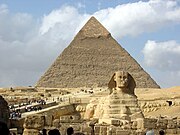
Los Angeles Attractions
There are few cities that offer as much entertainment, excitement and diversity as do the attractions in Los Angeles. For years movies and songs have portrayed LA as the place to make it big as a model, actor or musician. Hopefuls pack their bags and leave their homes for the promise of lure and fame.
Today LA boasts attractions like the famous Hollywood Boulevard Walk of Fame, which honors those who have made a difference in film, music and stage. Walking and sight seeing tours are a great way to see and experience Hollywood. Everything is located near Grauman's Chinese Theater where film and music enthusiasts can place their hands in the handprints and shoeprints of their favorite celebrities. Guided bus tours also of Hollywood offer an outside glimpse of the homes of the rich and famous.
Some of the best concerts in music history have been played at the Hollywood Bowl, another major Los Angeles attraction. This huge historical venue has been the playing stage for huge acts such as Frank Sinatra and The Beatles. Also, no Hollywood trip is complete without a stop at Amoeba Records, the world famous independent music chain right off Sunset Strip.
Los Angeles also offers attractions like the beautiful Getty Museum, which hosts amazing art exhibits and places like Universal Studios Hollywood, where people can see the wonder of movie special effects. California's most popular theme parks like Disneyland, Knott's Berry Farm and Magic Mountain are just a short drive away, making Los Angeles the perfect tourist getaway.
Visitors to the Los Angeles area will also get a taste of the shopping attractionsRodeo Drive and even the eclectic Melrose Avenue. Shopping enthusiasts will get a taste of designer super stores to small LA fashion inspired boutiques. like the world famous Beverly Center, the high class
Beach area attractions in LA

The beaches are also famous attractions in LA. Just a 30-minute drive from Downtown LA, the entertaining Santa Monica Pier is within walking distance of the Third Street Promenade, which is filled with restaurants, interesting stores, outdoor cafes and all sorts of live entertainment on the streets. Further south of Santa Monica is the Venice Beach Boardwalk, famous for the eclectic people, unique shops and tattoo parlors. The famous Muscle Beach gives passersby's the opportunity to watch hunky men working out. For a more relaxing beach experience locals drive down to the trendy Zuma beach in Malibu, the Pacific Palisades and even Manhattan Beach.











